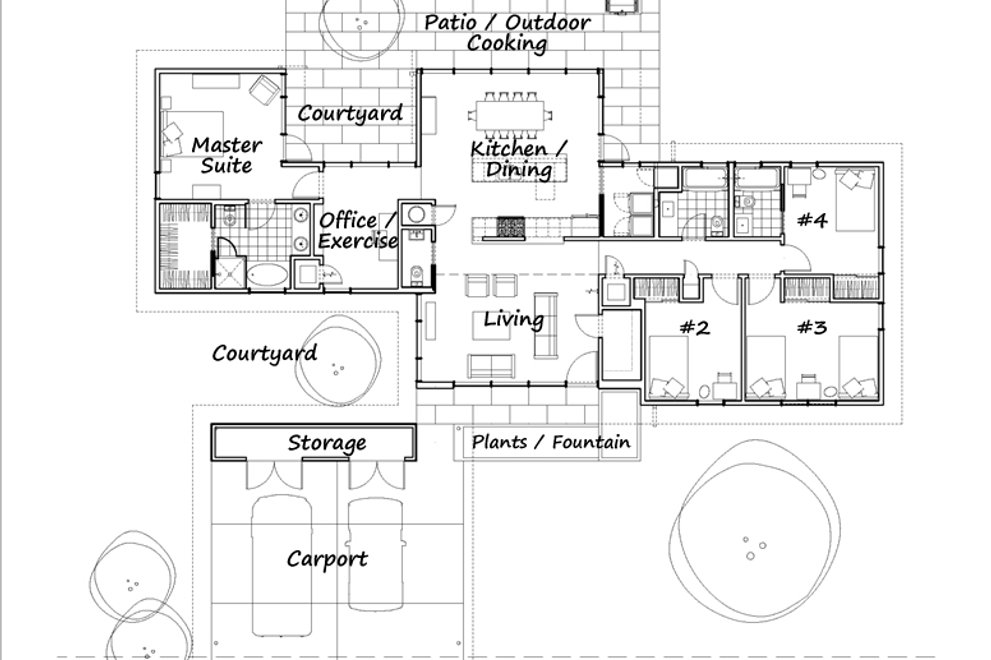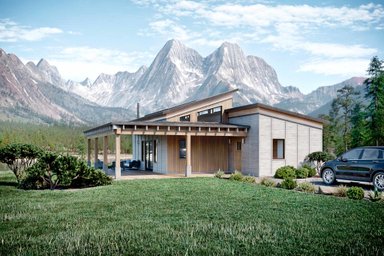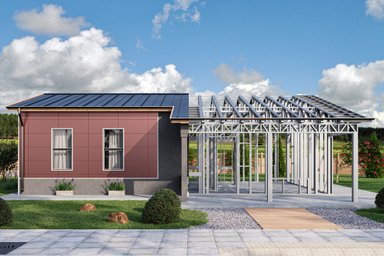To learn more about how to plan for aging in place when building a new home, I interviewed Terri Steinberg MD. Terri is a Geriatrician, which she describes as "Either an aging doctor or a doctor that sees elderly patients."
When I asked her why this is an important topic she said "This is important because we're all, hopefully, going to get old."
Steinberg mostly does home visits. This has been an eye opening experience because she has been able to see what works and what doesn’t. According to Steinberg, though people always talk about accessibility, there are three key elements to aging in place and accessibility is the third most important. Aging in place can mean anything from living at home until significant impairment occurs or never having to leave the house.
1. Location: Think about how you will live. What activities you want to do, what type of environment do you want to live in? What do want the freedom to do? Where you live should be based on the answers to these questions.
2. Function: the number of rooms and function of those rooms. What is big enough as a master bedroom when it is just you or your spouse may not be big enough once equipment needs to be in the room, or once the room takes on a role as a main living space, where you take visitors, etc. What Steinberg sees most often that does not work is when a 1st floor room in a house gets converted to a bedroom for an aging parent, but the room lacks privacy. It can be helpful if there is a room that could be used by an in-house caregiver.
3. Accessibility: You want to make sure you are not marooned in one part of the house. This means making sure you can get around with a walker or a wheelchair, and if the house is not 1 story, that you plan for either a chairlift or an elevator. Steinberg says she often sees chairlifts in homes that go unused because physical impairments keep people from being able to use them. An elevator is the only sure way to ensure that you will be able to reach upper floors. It is possible to plan for an elevator by building a shaft that is just used for closet space and then floors are removed in the shaft and an elevator is built in at a later date. A builder, with input by an elevator company, can build this feature into any multi-level new construction home.
Steinberg says if you plan for the normal aging process, you will be planning for intellectual impairment and physical impairment. With intellectual impairment, once you get past mild dementia, it is probably not safe for you to stay in your home and it probably won't matter to you anyway if you have moderate to severe dementia. Technology like sensors that indicate when pill bottles or the refrigerator are opened can be helpful for caregivers.
With physical impairment the main issues are losing the ability to ambulate and losing function in your hands, according to Steinberg. If you don't have to climb stairs, can get to different areas of your house, and don't need to use much arm strength or fine motor skills to open doors and cabinets, then you will be able to age in place. To design for these issues you need lever hardware on doors, cabinet hardware that is easily graspable, and doorways and hallways that are wide enough to allow passage in a wheelchair. Keep in mind that ADA standards are designed to work for all equipment. She says you can often get by with less.
Plan in as much space to move about as you can. There are many things that are difficult to do as a retrofit, but if you are building a new home that you plan to age in place in, you can plan for these features. If you can no longer do it yourself and someone is grocery shopping for you, you will need to have enough pantry space for them to stock up for an extended period. They will not be shopping two or three times a week.
A curbless shower is more expensive than a traditional walk in shower, but you may want to plan for at least one shower to have this feature. Even if you do not want to install grab bars now, make sure your builder installs wood blocking for grab bars to be installed later in the shower and bath. Note where the blocking is installed and keep this information somewhere where you can find it later.
Steinberg says the current generation of elderly is not too familiar with technology but it will become more and more helpful as baby boomers age. Available today are smart phone controlled thermostats, lighting, blinds, etc, and the uses of technology to allow us to stay in our homes longer is sure to increase.
As is always the case with building, a little planning goes a long way. To age in place, don't just think about your needs now - try to imagine your future needs as well.
To see Plan 460-3 by Daniel E. Bush, click here.
Steinberg mostly does home visits. This has been an eye opening experience because she has been able to see what works and what doesn’t. According to Steinberg, though people always talk about accessibility, there are three key elements to aging in place and accessibility is the third most important. Aging in place can mean anything from living at home until significant impairment occurs or never having to leave the house.
1. Location: Think about how you will live. What activities you want to do, what type of environment do you want to live in? What do want the freedom to do? Where you live should be based on the answers to these questions.
2. Function: the number of rooms and function of those rooms. What is big enough as a master bedroom when it is just you or your spouse may not be big enough once equipment needs to be in the room, or once the room takes on a role as a main living space, where you take visitors, etc. What Steinberg sees most often that does not work is when a 1st floor room in a house gets converted to a bedroom for an aging parent, but the room lacks privacy. It can be helpful if there is a room that could be used by an in-house caregiver.
3. Accessibility: You want to make sure you are not marooned in one part of the house. This means making sure you can get around with a walker or a wheelchair, and if the house is not 1 story, that you plan for either a chairlift or an elevator. Steinberg says she often sees chairlifts in homes that go unused because physical impairments keep people from being able to use them. An elevator is the only sure way to ensure that you will be able to reach upper floors. It is possible to plan for an elevator by building a shaft that is just used for closet space and then floors are removed in the shaft and an elevator is built in at a later date. A builder, with input by an elevator company, can build this feature into any multi-level new construction home.
Steinberg says if you plan for the normal aging process, you will be planning for intellectual impairment and physical impairment. With intellectual impairment, once you get past mild dementia, it is probably not safe for you to stay in your home and it probably won't matter to you anyway if you have moderate to severe dementia. Technology like sensors that indicate when pill bottles or the refrigerator are opened can be helpful for caregivers.
With physical impairment the main issues are losing the ability to ambulate and losing function in your hands, according to Steinberg. If you don't have to climb stairs, can get to different areas of your house, and don't need to use much arm strength or fine motor skills to open doors and cabinets, then you will be able to age in place. To design for these issues you need lever hardware on doors, cabinet hardware that is easily graspable, and doorways and hallways that are wide enough to allow passage in a wheelchair. Keep in mind that ADA standards are designed to work for all equipment. She says you can often get by with less.
Plan in as much space to move about as you can. There are many things that are difficult to do as a retrofit, but if you are building a new home that you plan to age in place in, you can plan for these features. If you can no longer do it yourself and someone is grocery shopping for you, you will need to have enough pantry space for them to stock up for an extended period. They will not be shopping two or three times a week.
A curbless shower is more expensive than a traditional walk in shower, but you may want to plan for at least one shower to have this feature. Even if you do not want to install grab bars now, make sure your builder installs wood blocking for grab bars to be installed later in the shower and bath. Note where the blocking is installed and keep this information somewhere where you can find it later.
Steinberg says the current generation of elderly is not too familiar with technology but it will become more and more helpful as baby boomers age. Available today are smart phone controlled thermostats, lighting, blinds, etc, and the uses of technology to allow us to stay in our homes longer is sure to increase.
As is always the case with building, a little planning goes a long way. To age in place, don't just think about your needs now - try to imagine your future needs as well.
To see Plan 460-3 by Daniel E. Bush, click here.






